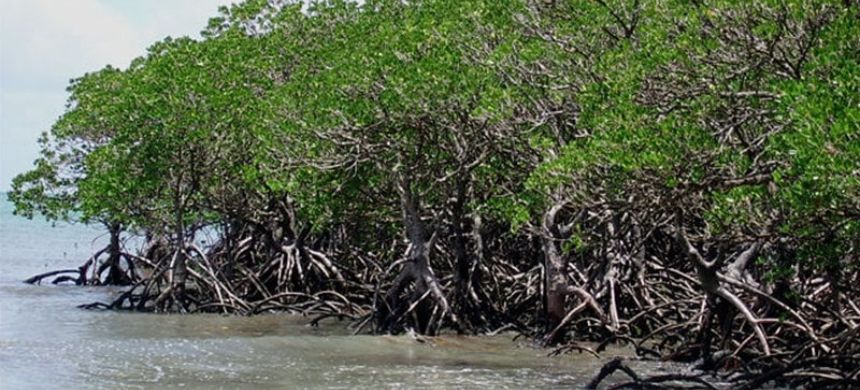Ecologists from the US Forest Service and their collaborators have published significant findings indicating that planted mangroves can achieve up to 70% of the carbon storage seen in natural mangrove forests within just 20 years. This groundbreaking research, highlighted in a press release on the Eureka Alert website, addresses the long-standing question of how quickly planted mangroves can sequester carbon comparable to their natural counterparts.
Rich MacKenzie and Sahadev Sharma, formerly with the Institute of Pacific Islands Forestry, initiated this research about a decade ago in Cambodia, where they discovered that 20-year-old mangrove plantations had carbon stocks similar to intact forests. Their recent collaboration with Carine Bourgeois from the Forest Service’s International Programs office and a global team of mangrove researchers expanded upon this work. Using logistic models developed from 40 years of data encompassing nearly 700 planted mangrove sites worldwide, the team determined that after two decades, planted mangroves achieve between 71% and 73% of the carbon storage capacity observed in natural mangrove stands.
Also Read: Punjab proposes paid internships for graduates to assist in anti-smog efforts
These findings hold significant implications for global mangrove restoration efforts, as mangroves have faced a 35% decline in global area over the past five decades due to various human and environmental factors. “As our dataset expands and more data becomes available, we anticipate that researchers and stakeholders will gain valuable insights for planning and implementing mangrove restoration projects,” Sharma noted.
Ongoing monitoring of mangrove plantations is crucial for assessing their progress and success. According to Rupesh Bhomia from the Center for International Forestry Research and World Agroforestry (CIFOR-ICRAF), regular monitoring can provide essential data to inform adaptive management strategies and ensure the efficacy of restoration efforts.
Despite their carbon sequestration potential, the researchers caution that mangrove plantations are not universally superior to conserving intact mangrove ecosystems. MacKenzie emphasized, “While well-planned and executed mangrove plantations can effectively restore carbon stocks, they are not always the optimal restoration solution.” Bourgeois echoed this sentiment, stressing the irreplaceable value of conserving existing mangrove habitats. She emphasized that according to their models, widespread replanting efforts in highly suitable mangrove areas would sequester less than one percent of annual global emissions over two decades.
In conclusion, while planted mangroves offer promising benefits for carbon storage and ecosystem services, conserving natural mangrove forests remains paramount. These ecosystems play critical roles in coastal protection, biodiversity conservation, and sustainable fisheries, underscoring their vital importance in global efforts to mitigate climate change and preserve coastal resilience.











